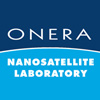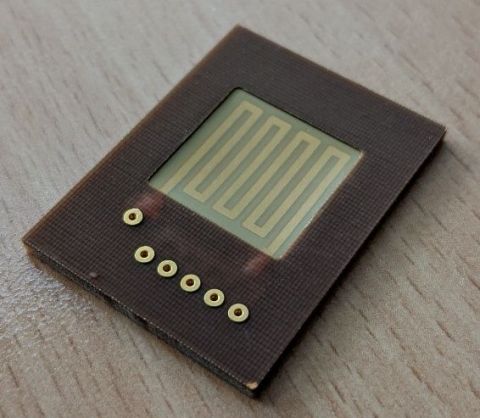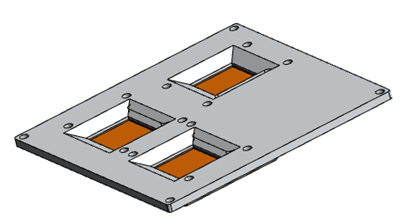Atomic oxygen (AO) is the main component of the residual atmosphere present at low earth orbit. The main consequence is erosion of surface materials. Some classes of materials are stable under AO attack (oxides for instance) and incoming flux is then re-emitted with specific angular and energy distributions. In case of sensitive materials, typically 90% of the incoming flux is also re-emitted. Then multiple reflections can locally enhance or lower erosion rate in complex geometry.
With the needs for “super low” and EOR orbits, flight data and detectors are of great interest to evaluate actual erosion yield and fluence in operational conditions. The concept of a light, low power, small size and low-cost detector is proposed by ONERA.
RESISTACK is an active AO detector based on a stacking of metallized polymer films acts a set of resistances in parallel. Kapton is chosen for its well-known erosion rate under AO flux, the absence of UV synergy, and energy-dependence linear law on erosion rate. The equivalent resistance gradually increases each time a layer is fully eroded (opened “switch”). The number and thickness of kapton layers define the range of fluence and accuracy of the detector. RESISTACK operation consists in continuous and automatic 2-pin or 4-pin measure of resistance to detect complete erosion of each layer, further correlated to fluence.
Manufacturing of prototypes is based on standard space-qualified flexible circuit process. RESISTACK device has been tested and validated in APTC and TVAC chambers (air-pressure and thermal vacuum testing), at CNES facilities. The calibration has been done at University of Montana under an AO flux facility.
The RESISTACK is planned to fly on the ISS in 2022 with the SESAME experiment and later on with the IONSat mission, developed at CSEP (Centre Spatial Etudiant Polytechnique).
| Left: RESISTACK device, dimensions 4 x 3 cm², detection zone is 1.6 x 1.6 cm² for a mass of 4g. Right: Three RESISTACK embedded in 2D module of SESAME (ISS, 2023). | ||


